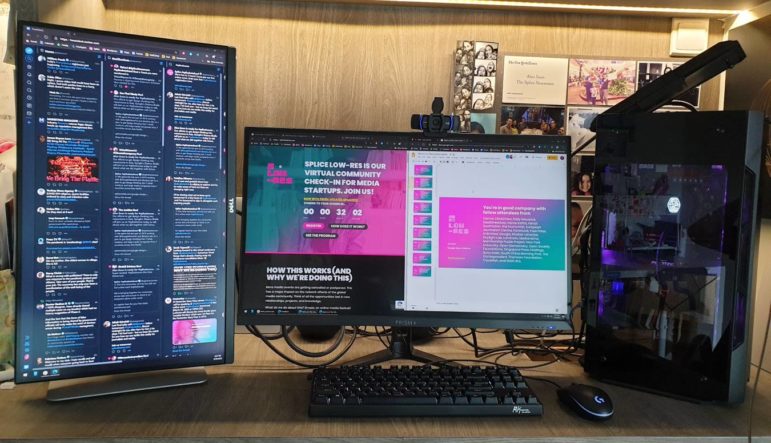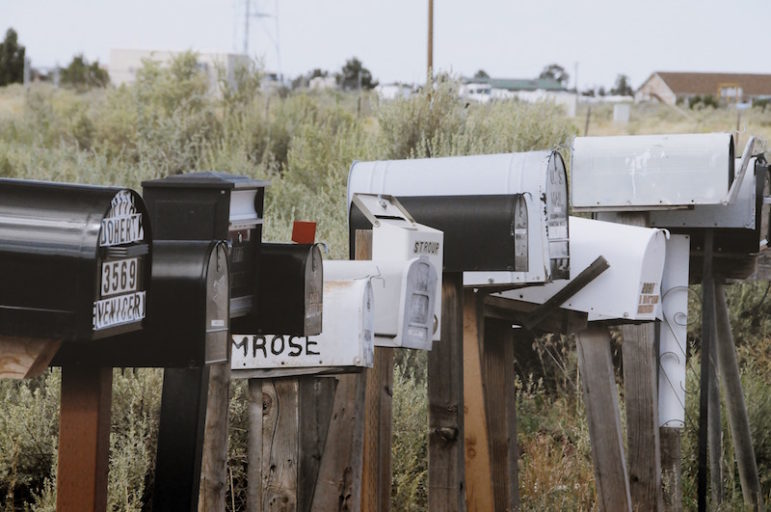

Photo by Steve Snodgrass, used via creative commons
How To Get People To Pay for News

Photo by Steve Snodgrass, used via creative commons
A study released earlier this month suggested that 40% of Americans would buy digital newspaper subscriptions if they were presented with a persuasive argument. It is worth spending a minute unpacking what that “persuasive argument” might look like.
It would be a mistake for the industry to think this is simply a marketing problem, that we can just focus group our way to better messaging, and people will start subscribing in droves. Making a persuasive argument to our audience about why they should support journalism is not about marketing the product, but about the product itself. Yes, newsrooms could be much better about articulating their value, but they also have to do much better at listening and transforming journalism to meet community needs. We have to show up for our communities in real and direct ways, engage them in our work, and give them a product that serves their needs.
The same study cited above “revealed significant variation in the news demands of different demographics.” How might journalism as a product (or a service) adapt to meet these diverse needs? Making a persuasive argument isn’t about telling communities why journalism is so important, it is about showing them.
“Trust is Our Greatest Challenge”
In an interview last week with the World Association of Newspapers and News Publishers, Washington Post editor Marty Baron said:
“Readers have to see and feel every day that we are trying to do something important and distinctive, that we are doing something that no one else will do. If they don’t see that, then I am fairly confident that they will abandon us.”
Today “trust is our greatest challenge,” argued Baron. To begin rebuilding trust news organizations have to start by listening better and getting “in touch” with the people they are trying to serve.

Photo by Taryn, used via creative commons
De Correspondent has made a name for itself by focusing on transforming journalism to transform the business model. In just a few years the Dutch digital startup has cultivated more than 40,000 paying members. In December, the sites co-founder and publisher Ernst-Jan Pfauthwrote “Selling ads is a short-term strategy […] subscriptions are the future of journalism.” Pfauth argues that between the rise of platforms and ad-blockers, now is the time for newsrooms to focus on building relationships with their readers.
De Correspondent revised the structures and workflows of most newsrooms to emphasize the relationship building. They have editorial meetings in public and emphasize people’s connection to individual journalists rather than the publication’s brand. Finally, the site tries to tackle wicked problems that “transcend traditional beats” and work closely with their members who contribute not just money but their own expertise and experiences.
Engagement is Key to Converting Viewers to subscribers
Engagement is key to converting viewers to subscribers. That was the finding of recent research described in the MIT Sloan Management Review. “It’s not enough to just add participatory options and hope that users will click and interact,” the researcher write. “To see any real economic benefit from user engagement, a website has to have a clear strategy in place.” Engagement can’t be marginalized, it has to be central to the work we are doing and has to be designed strategically and supported over time. The word engagement is commonly traced back to the french “engager” which means “to pledge oneself.” So engagement is not just about creating opportunities for community participation in the reporting process, it’s about making a commitment, building a relationship.
At hyperlocal news site Berkeleyside, they have built a 1,000 person membership which now accounts for just over 20% of the site’s revenue. Tracey Taylor, one of three co-founders, recently told the Knight Digital Media Center that they have grown their membership through engagement at events, partnerships with other local organizations and by focusing on building and maintaining relationships. The Guardian’s David Pemsel this week said that, while their membership program has been slow to get off the ground, they think that members could provide one-third of the Guardian’s revenue in the next three years. “To be able to parade around and say ‘we’re big’ is not good enough” he said, “We want to convert our anonymous reach into a known audience.”
From Journalism at an Industrial Scale, to Journalism at a Human Scale

Photo by galactic_ac, used via creative commons
Embedded in Pamsel’s quote is one of the most important, and fundamental ideas, about how journalism as a product needs to change. It’s a shift from journalism at an industrial scale, to journalism at a human scale. A shift from the one-to-many broadcast model, to the interconnected network model. Jeff Jarvis put his finger on it two years ago: “As we in media build new skills around relationships, we must first stop seeing people as a mass. We need to know them, then serve them as individuals.” Reorienting the process of journalism around this goal requires us to embrace technology change as well as cultural change.
Thus far, the industry has been quicker to adopt technological innovation than to change the culture and practices the shape how we use that technology. That’s according to new research from Brian Ekdale, assistant professor at the University of Iowa. Ekdale found widespread agreement about the digital transformation of newsrooms, but “found that journalists responded less favorably to relational changes, such as increased collaboration with community members, and even more tepidly to culturalchanges that challenge perceptions of ‘what journalism is and how it is — or ought to be — done.’” There are some real questions about how engagement and community collaboration were defined in the study, and that it may not have accounted for pro-am partnership models like Hearken.
People have shown again and again that they are willing to pay for content they care about. Technology can help ease the trasaction costs and encourage new ways to connect with communities. However, if we want to encourage readers to support us — through subscriptions, donations, memberships — it is not enough to argue that journalism is important and thus deserves people’s support. We should do that, but we should also be willing to ask hard questions about how we can do journalism that adds value to their lives. We should look for places where we are not living up to the needs of our communities. Our communities won’t have all the answers, neither do we, but we are stronger if we work together.
Molly de Aguiar is the Program Director for Informed Communities and Josh Stearns is the Director of Journalism Sustainability at the Geraldine R. Dodge Foundation.
This article was originally published on Medium and is cross-posted with permission.









